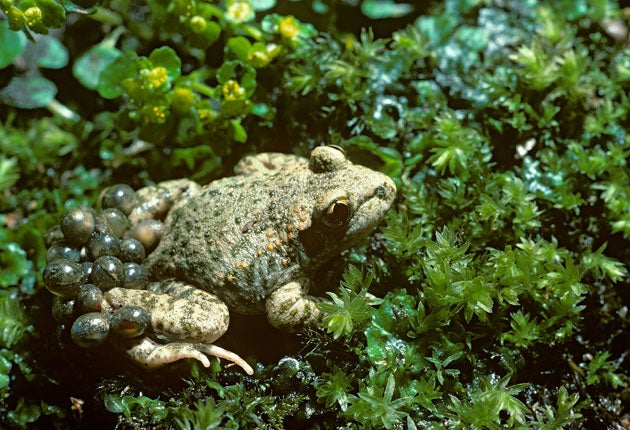Midwife toads under attack from deadly fungal disease

Your support helps us to tell the story
From reproductive rights to climate change to Big Tech, The Independent is on the ground when the story is developing. Whether it's investigating the financials of Elon Musk's pro-Trump PAC or producing our latest documentary, 'The A Word', which shines a light on the American women fighting for reproductive rights, we know how important it is to parse out the facts from the messaging.
At such a critical moment in US history, we need reporters on the ground. Your donation allows us to keep sending journalists to speak to both sides of the story.
The Independent is trusted by Americans across the entire political spectrum. And unlike many other quality news outlets, we choose not to lock Americans out of our reporting and analysis with paywalls. We believe quality journalism should be available to everyone, paid for by those who can afford it.
Your support makes all the difference.A rare species of toad in the French Pyrenees is the latest variety of amphibian to be threatened by a deadly fungal infection that scientists have so far been unable to cure.
The infection has had devastating effects on frogs and toads in other parts of the world, from Central America to the United States and Australia and poses a potential threat to more than 30 per cent of the world's amphibians.
The latest victims are a protected species that inhabit the snowy peaks of the Pyrenees. The population of midwife toads (Alytes obstetricans) – so-called because it is the male who carries the eggs around for the female, protecting and nurturing them until they hatch – is falling drastically.
Eric Sourp, of the Scientific Service at the Pyrenees National Park, said that in one area, Néouvielle, 95 per cent of the population had been wiped out. In another area 350 dead toads were found in one day.
It is research to test for pregnancy in humans, using live frogs, that is thought to have been at the source of the outbreak. The prevailing theory is that a South-African frog species, the Xenope laevis, spread the infection when it was exported in its thousands for use in the tests,which involve injecting a woman's urine under the skin of a frog. If the woman is pregnant, a female frog will lay eggs or a male be encouraged to produce sperm.
A researcher at the French National Centre for Scientific Research, Dirk Schmeller, said: "Xenopes are healthy carriers of the infection, and no one realised that there were security problems."
Infected toads usually die within two weeks, although scientists are still speculating over the exact cause of death. The symptoms include "extreme lethargy" and "an extreme loss of weight" according to researcher Adeline Loyau.
Join our commenting forum
Join thought-provoking conversations, follow other Independent readers and see their replies
Comments